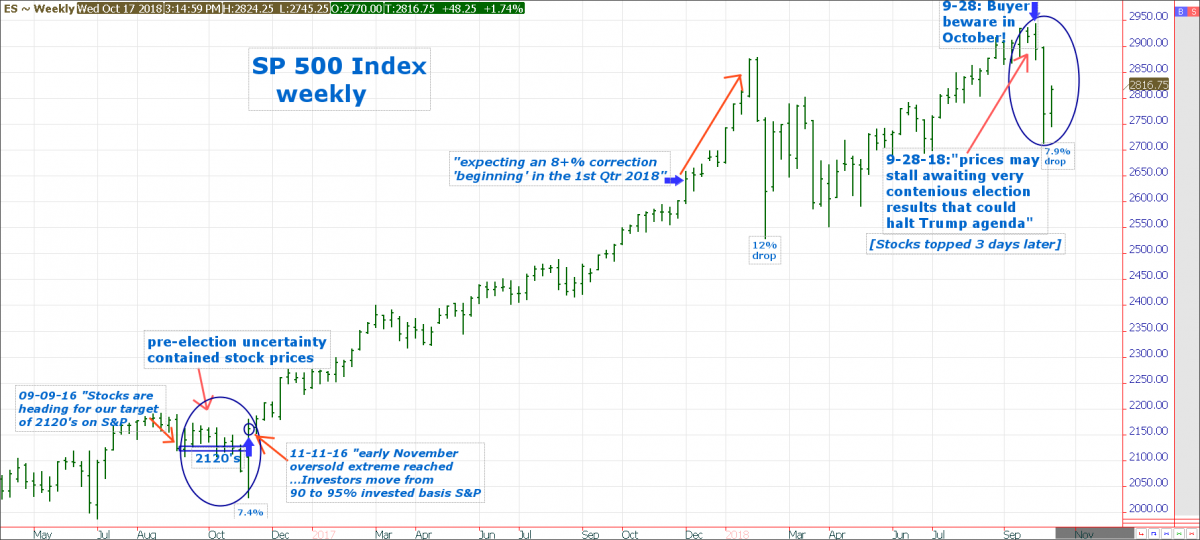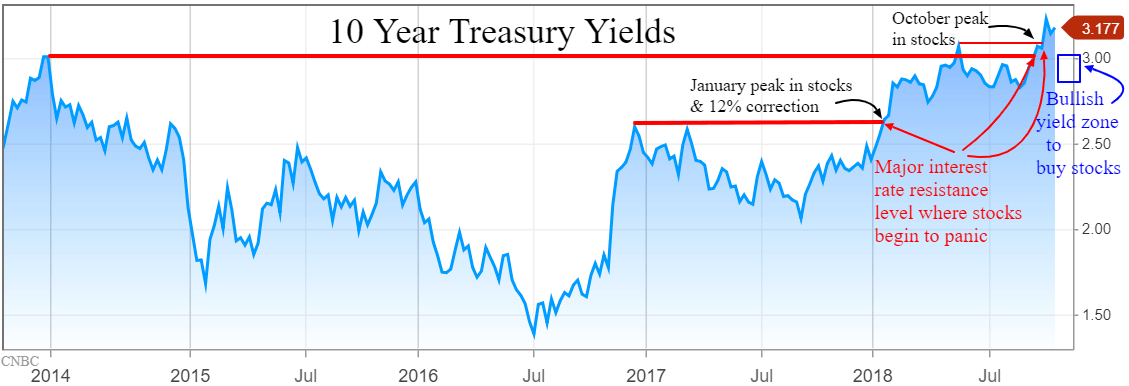Originally posted at ExecSpec.net
The October correction phase will continue until election day and beyond should Trump lose control of Congress to his rivals with echoes of the 2016 election uncertainty saga.
On 09-28-18, three days prior to the the record stock market peak on October 3rd, our newsletter warned of an October correction parallel to 2016. The common characteristic being the fever-pitched escalation of angst over a contentious election period, with both parties expressing dire outcomes to cajole voters to the polling stations.
Our expected October correction mirroring 2016 allowed for a matching 7.4% drop as in 2016 and, so far, October 2018 didn’t disappoint with an almost identical drop of 7.9%. While higher interest rates and concerns of contagion from slower Chinese growth are the main triggers for the investor exodus from stocks, pre-election jitters of a potential deviation from Trump’s economic agenda and political future is the dark cloud preventing any new records until after election day.
In the short-term, this is an environment where excellent earnings beats above consensus fail to sustain buyers. Having excess cash in October and restraint in equity purchases continue to be warranted.
Similar to the late January to early February 2018 correction, stocks rebounded off the initial panic correction low of October 11th with a brief rally and now prices are heading back toward the lows. These lows need to hold (+ or – 1% on a closing basis) or the panic will become frenzied to the downside.
Ideally, we favor a trading range for stocks being carved out by the recent 8% retracement low and this week's high. The termination of strong corrections are often marked by an investor panic into the safety of Gold and Bonds. Should gold exceed $1250 and the 10-year yield fall back under 3%, we could then allow for an extreme oversold sentiment environment with stocks reaching new 4th quarter 2018 lows as exhibited below.
That would set up a great buying opportunity, but our view remains that prices can’t sustain an assault on recent record highs until “at least” after the election. The economic drag from a Trump-induced China Trade Syndrome and potential for far more hostile domestic politics post-election creates a volatile environment beginning November 7th in either direction short term.
While we continue to look for decent US economic growth longer term in 2019 without a recession, the earnings headwind from higher interest rates, tougher tax cut enhanced earnings comparisons, a weaker China, and potential uncertainty in the political arena post election are a reason for a more defensive posture that waits for deeply oversold conditions before moving back to be more fully invested in stocks. Despite these headwinds, we would be converting a portion of the heavy cash position to stocks if the 10-year falls back under 3%.









